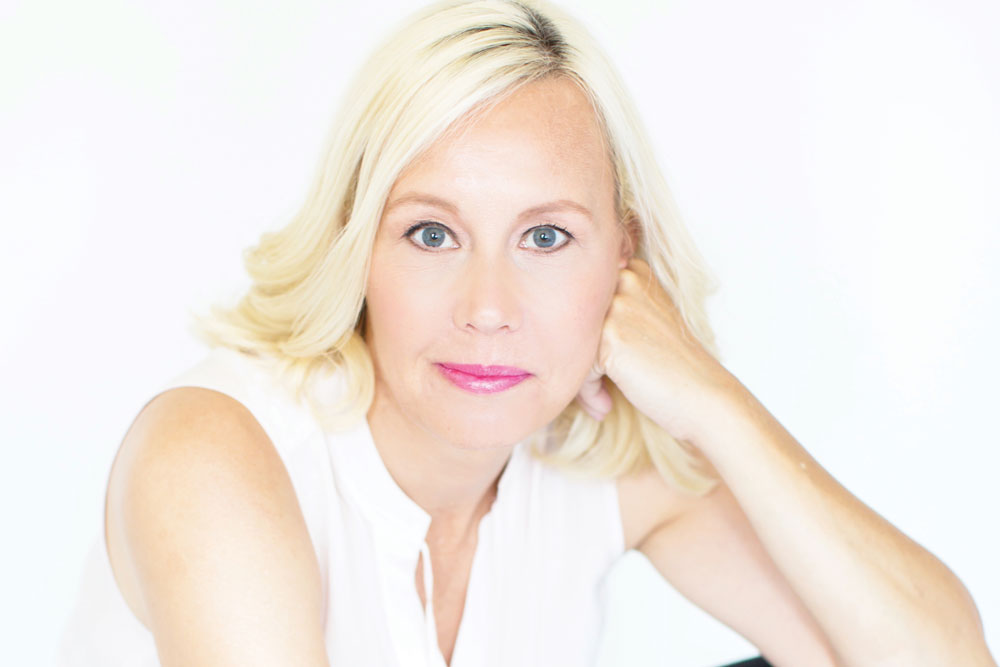Paula Cooper, founder of Dine Aware in Toronto, nearly gave up on pizza—and dining out in general—when she was diagnosed with celiac disease eight years ago. Now she’s on a quest to help restaurateurs better understand and accommodate the needs of celiac patients and customers with food allergies—and better communicate with them through a common language.
Q: Tell us about your company, Dine Aware—its origin and mission?
Paula Cooper: When I learned I had celiac disease, it effectively crippled my ability to eat out, be spontaneous and travel. Not because there were not options available, but I couldn’t get past the initial Q&A with staff. They didn’t understand what I was asking, and I didn’t trust they knew what they were talking about. So I just stopped eating out.
But eating out is like an Olympic sport for me, so that wasn’t going to work long-term. When I began to dig into the issue, I found nobody was supplying the industry with a solution that wasn’t 100% consumer-centric, obligating or expecting establishments to always accommodate the dietary restriction. There are as many food allergies as there are people on the planet, so this is not a reasonable or realistic expectation.
I wanted to give the industry a true solution, one they wanted to adopt rather than had to adopt. Like foodservice chains that provide consistency regardless of what hemisphere they’re located in, Dine Aware is a food-allergy language that can be spoken across entire teams, from one to 1,000,000-plus, anywhere in the world. Our mission simply is to help foodservice and food allergy customers better understand each other. We want to eliminate the food-allergy language barrier so consumers, companies and employees can have safer, more informed conversations, leading to safer, more informed decisions. I created it for me but made it for everyone.
Q: As a pizza fan, how did celiac disease impact your ability to enjoy pizza in restaurants?
Cooper: Huge pizza fan! It was like a food group for me. It was about eight years ago when I was forced to go 100% gluten-free, and options then were virtually nonexistent. In fact, my rate of eating out overall dropped a whopping 85%, a common story for people with dietary restrictions. Gluten-free pizza was figuratively and literally off the table at that time. While gluten-free pizza has certainly gained in popularity over the years, finding good (and safe) pies is still a bit of a unicorn for me.
 |
|
Only about one percent of the U.S. population has celiac disease, but these people often influence the dining-out decisions of their families. |
Q: What are your expectations from a pizzeria that offers gluten-free food?
Cooper: The first thing I’m looking for is information, not menu items. The goal is to make an informed decision. To do that, I—and folks like me—need answers to things we can’t see. Questions like: “Do you have an ingredient list I can look at? Where is the pizza prepared? When is the dough prepared? How is the dough stored? Do you keep toppings separate for gluten-free orders? Is the pizza cooked in a shared oven? If so, how do you prevent cross-contact, if at all?”
This information helps me to make the decision about whether it’s safe to order before I start drooling over the menu. If the restaurateur has these answers prepared in advance, it saves everyone time and makes me (as a customer) feel confident that the establishment knows what they’re talking about. I feel I can trust them. And trust is really what I’m looking for up front.
Q: How would you evaluate the quality of gluten-free pizza today compared to five or so years ago?
Cooper: In most cases, it’s only slightly better, for a couple of reasons. First, I’m simply not able to try all the gluten-free pizza out there because of inadequate cross-contact prevention practices. Truly, I would make it my life’s mission to eat all the GF pizza if everyone would just follow the right protocols. Second, in the rush to get a gluten-free crust on the menu, too many places have not invested the appropriate time in dough development. Gluten-free dough is tricky.
In my hometown (Toronto), there is a restaurant that offers a wood-fired Neapolitan-style pizza, but they refused to offer a gluten-free option until they properly developed the best dough. It took them years to do it. I can tell you from experience every single bite was worth every single second the city (and I) waited. Nothing says, “I don’t care about a long-term pizza relationship with you” like a lousy crust. Take the time to develop it properly, and I’ll wait years for you, too.
Q: So what should restaurateurs be doing differently?
Cooper: There is still a tendency with gluten-free to think short-term, focusing on the fad instead of developing the fans. Celiac disease and food allergies are not a fad; they are tied to societal shifts in how we are going to eat. Transparency and traceability are the nucleus of catering to guests with food allergies.
I want to know, as a customer, that you’ve done your homework about ingredient sourcing, processing those ingredients in a safe way (traceability), then communicating with me what you know (transparency). Knowing where my food comes from, how it’s processed, how it ends up on my plate, and how seriously foodservice takes these concerns and adapts to this shift will mean the difference between those who thrive and those who don’t. Like “location, location, location” in real estate, “communication, communication, communication” is the future of foodservice. Let your gluten-free customers look behind the curtain, and they will reward you with revenue and loyalty.
Q: Do you have a favorite pizzeria that caters to the gluten-free crowd?
Cooper: My recent favorite is the one I mentioned before, Pizzeria Libretto in Toronto. They have a celiac-friendly location on King West. The attention to detail on their crust development is outstanding! This isn’t just exceptional gluten-free pizza; it is an exceptional pizza! That’s hard to do. I have converted many, both gluten and non-gluten alike, to
this restaurant.

Q: Aside from celiac disease, what are some food allergies that pizzeria owners should keep in mind?
Cooper: The next on the list are people with lactose intolerance or milk allergies. It’s important to understand the distinction, because lactose intolerance leads to digestive issues, while milk allergies can lead to anaphylaxis—even death. Although that’s not to say people should take lactose intolerance less seriously, just be aware of the difference.
Other problematic ingredients can be anchovies for people with a fish allergy, soy, tree nuts (think pesto) and sulphites (pepperoni and olives). Mustard can even sneak into pizza. There are many areas where food allergens can hide. Implement really good ingredient tracking practices and remember that the customer is always the best source of information about their dietary restrictions.
Q: Dine Aware offers courses for restaurants and other foodservice providers. What does this training entail?
Cooper: Food allergies in foodservice can seem like guests are speaking another language. There are unique questions, words and even a style of interaction that inform that type of communication, all of which are the cornerstones to making informed decisions. People can only communicate what they understand. Knowing how to “speak food allergy” with guests helps the staff feel confident and knowledgeable in their exchanges. When employees are empowered with a food-allergy language, they can empower guests in their decision making.
Our focus is on creating a culture of awareness that is consistent across the entire team, locations and brands. We have six courses for the entire front- and back-of-the-house team. We wanted a solution that did not rely on just training managers, then stressing their time and resources to constantly train new hires. That’s not really a solution at all. Instead, we automated the training process so everyone is on the same page, 100% of the time.
The courses cover best practices, golden rules, cross-contact prevention and communication. We have a unit that touches on the top 14 food allergens, since employees need to have a basic understanding of these allergens.
One of the most important and unexpected outcomes of teams learning how to speak Dine Aware has nothing to do with food allergies at all. We began to notice that when companies established a culture of awareness, it helped people overcome misconceptions about food allergies and food allergy guests and to foster a state of tolerance. So not only do employees speak the message of tolerance in the workplace, they also bring it back into their communities. And I think that’s pretty cool.















